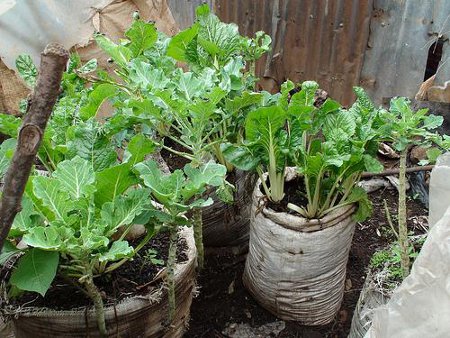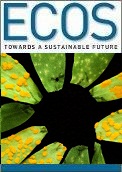
|
Published: 19 December 2011
‘State of the World’: farming key to less poverty, stable climate
Worldwatch Institute has just released its State of the World 2011 report, which highlights the role of agricultural innovation in preventing food waste, building resilience to climate change, and strengthening farming in cities.
Drawing from the world’s leading agricultural experts and hundreds of innovations that are already working on the ground, the report – subtitled Innovations that Nourish the Planet – outlines 15 proven, sustainable food-security systems.
Worldwatch Institute President Christopher Flavin says the progress showcased in the report ‘will inform governments, policymakers, NGOs, and donors that seek to curb hunger and poverty, providing a clear roadmap for expanding or replicating these successes elsewhere’.
‘We need the world’s influencers of agricultural development to commit to longstanding support for farmers, who make up 80 percent of the population in Africa,’ he added.
The report follows a number of recent food security initiatives such as the Obama administration’s Feed the Future program, the Global Agriculture and Food Security Program (GAFSP), the UN’s World Food Programme (WFP), and the Comprehensive Africa Agriculture Development Programme (CAADP).
According to Worldwatch, ‘a large share of the human family is still chronically hungry, a half-century after the Green Revolution’. This is largely because, since the mid-1980s when agricultural funding was at its height, agriculture's share of global development aid has fallen from over 16 per cent to 4 percent today.
The report predicts that, given the current global economic conditions, investments are not likely to increase in the coming year. Much of the more recently pledged funding has yet to be raised, and existing funding is not being targeted efficiently to reach the poor farmers of Africa.
‘The international community has been neglecting entire segments of the food system in its efforts to reduce hunger and poverty,’ said Worldwatch’s Danielle Nierenberg.
‘The solutions won’t necessarily come from producing more food, but from changing what children eat in schools, how foods are processed and marketed, and what sorts of food businesses we are investing in.’
Serving locally raised crops to school children, for example, has proven to be an effective hunger- and poverty-reducing strategy in many African nations, and has strong parallels to successful farm-to-cafeteria programs in the US and Europe.
Moreover, ‘roughly 40 per cent of the food currently produced worldwide is wasted before it is consumed, creating large opportunities for farmers and households to save both money and resources by reducing this waste,’ according to Brian Halweil, Nourishing the Planet co-director.
State of the World 2011 highlights solutions that are already working to reduce hunger and poverty, including:
-
the TRY Women’s Oyster Harvesting producer association organised by 6000 women in The Gambia. The women devised a sustainable co-management plan for the local oyster fishery to prevent overharvesting and exploitation. Oysters and fish are an important, low-cost source of protein for the population, but current production levels have led to environmental degradation and changes in land use. The government is working with groups like TRY to promote less destructive methods and expand credit facilities to low-income producers.
-
‘vertical’ gardens being grown by 1000 women farmers in Kibera, Nairobi – the largest slum in Kenya. The gardens, built using sacks of dirt, have the potential to feed thousands of city dwellers while also providing a sustainable and easy-to-maintain source of income for urban farmers. With more than 60 per cent of Africa’s population projected to live in urban areas by 2050, such methods may be crucial to creating future food security. Worldwide, 800 million people engage in urban agriculture, producing 15–20 percent of all food.
-
preservation of indigenous varieties of livestock by pastoralists in South Africa and Kenya. These animals are adapted to heat and drought, traits that will be crucial as climate extremes on the continent worsen. Africa has the world’s largest area of permanent pasture and the largest number of pastoralists, with 15–25 million people dependent on livestock.
-
interactive community plays to engage women farmers, community leaders, and policymakers on gender equity, food security, land tenure, and access to resources. Women in sub-Saharan Africa make up at least 75 per cent of agricultural workers and provide 60–80 per cent of the labour to produce food for household consumption and sale.
-
Uganda’s Developing Innovations in School Cultivation (DISC) program is integrating indigenous vegetable gardens, nutrition information, and food preparation into school curriculums to teach children how to grow local crop varieties that will help combat food shortages and revitalize the country’s culinary traditions. School nutrition also inspires and teaches children to become farmers of the future, ensuring long term food security.
Source: Worldwatch Institute




